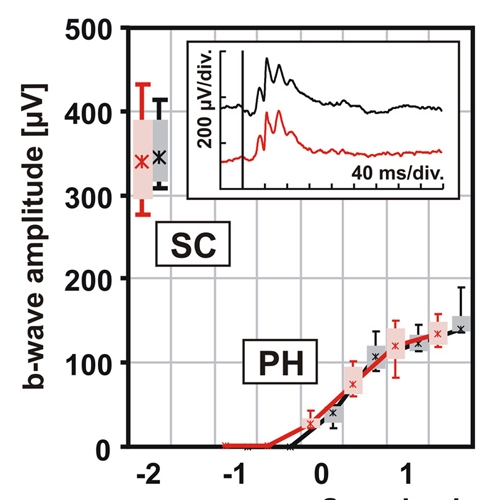In Vivo Analysis of Cone Survival in Mice
05-Jan-2010
Purpose. To identify individual cone photoreceptors in a transgenic mouse line in vivo based on selective expression of green fluorescent protein (GFP) using cSLO (confocal scanning laser ophthalmoscopy) and to use this approach to monitor cone cell fate in mouse models of retinal degeneration. Methods. Transgenic mice expressing GFP under the control of a red-green opsin promoter (RG-GFP mice) were analyzed in vivo with respect to GFP expression in cone cells using cSLO and functional integrity using electroretinography (ERG). Histology was performed to correlate the pattern of GFP expression with light microscopic data. Longitudinal monitoring of cone survival was evaluated in crossbreds of RG-GFP mice with cpfl1 and Rpe65−/− mutant mice, respectively. Results. The authors found that RG-GFP transgenic mice had a stable GFP expression that did not interfere with retinal function up to at least 3 months of age. Thus, a longitudinal analysis of cone degeneration in individual RG cpfl1 and RG Rpe65−/− cross-bred mice in vivo was successfully performed and demonstrated distinct time frames of cone survival in the particular mouse model. Conclusions. Monitoring GFP expression in cone photoreceptor cells, such as in the RG-GFP mouse, is a promising in vivo approach for the analysis of cone survival in mice.











